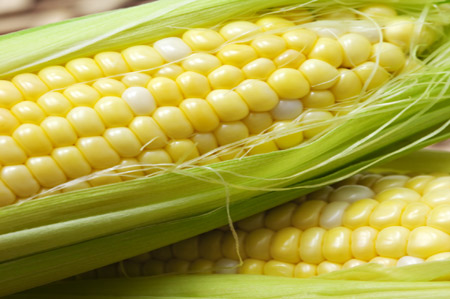 (Farm and Ranch Guide) – The corn market moved higher ahead of the Oct. 10 Crop Production report.
(Farm and Ranch Guide) – The corn market moved higher ahead of the Oct. 10 Crop Production report.
On the CME Group exchange, cash corn on Oct. 9 traded with December 2014 at $3.42, March at $3.55, May at $3.63, July at $3.71, September at $3.79 and December 2015 at $3.88 per bushel.
The market is offering farmers 21 cents to store corn from December until May.
Compared with prices back on Sept. 26, the December future was 17 cents higher, March was 17 cents higher, May was 16 cents higher, July was 17.5 cents higher, September was 19 cents higher and December 2015 was 16.5 cents higher.
Ahead of the Oct. 10 World Agricultural Supply & Demand Estimates report, the 2014 corn carryout was just over 2 billion bushels.
“Old crop (2014) corn futures are going to find equilibrium here,” said Frank LaPlaca, vice president of commodities at Futures International, based out of Chicago.
“I think the job of the market going forward is for new crop (2015) corn to fight for acreage.”
LaPlaca thinks U.S. farmers will switch about 4 million acres from traditional corn acres into soybeans. Whether farmers will consider planting continuous soybeans, or will switch continuous corn acres to a corn/soybean rotation remains to be seen.
He also suspects farmers around the world will decrease corn acres on “fringe acres” that traditionally grew cotton or rice.
“With corn across the U.S. – if you are renting – primarily below the cost of production, soybeans are still profitable at these price levels,” he said. “The market is telling you to not plant corn, but plant soybeans.”
The USDA’s Oct. 9 export weekly sales report indicated U.S. corn sales of 30.9 million bushels. Traditionally, weekly export sales of 40 million bushels were considered excellent; however, the Oct. 9 report was ahead of the Oct. 2 report indicating weekly sales of 25 million bushels.
Weekly export sales have been running about 27 million bushels – right in line with the USDA’s expectation of 1.7 billion bushels in exports.
LaPlaca wanted to remind growers that USDA often increases their estimate for corn production in its November and January reports. The saying is, “Big crops get bigger.”
“Our assumption is that any sort of slight increase in the stocks-to-use ratio will cap this market at $3.50 per bushel,” he said, speaking in terms of the December 2014 future.
He added that technically, traders could argue that the futures corn market has slowed its downward trend. There is not enough leverage to move the corn market much higher, though.
“I have a couple of levels I’m watching,” he said. “The short-term breakout pivot would be $3.505 and then after that, the longer-term breakout pivot would be $3.81 per bushel (December 2014 futures).
“Until those numbers are traded through, I wouldn’t get too bullish.”
One caveat is the potential for outside interests to come into the corn market. If fund traders enter the commodity trade again, it could mean higher prices on the Board, but not at the local elevator.
At one elevator in western Minnesota followed in this column, cash corn on Oct. 9 was $2.77 per bushel with a basis of 65 cents under. Compared with a price of $2.56 on Sept. 26, the price was 21 cents higher, and the basis had narrowed by 3 cents.
“The price ratio between corn and soybeans is telling farmers they should be storing corn and selling soybeans,” he suggested. “I know farmers don’t want to sell their soybeans right now, but the soybean price is still better than the corn price cash that farmers are getting.”
For Minnesota, North Dakota and South Dakota farmers, LaPlaca thinks it’s very important to be aware of logistical issues occurring with their elevators, rail lines, truck traffic and more.
“If we have any type of nasty winter, this could be an issue that affects the Northwest Corn Belt,” he said. “We could see something where basis stays weak while the price goes high, if elevators can’t source the rail.”
Farmers need to make certain they put up a very high quality corn sample that will keep well and offer benefits to end users. If a lot of the corn is wet or poor quality, high quality corn may have greater value to local feedlots. Farmers will also avoid discounts when they come to sell their grain




